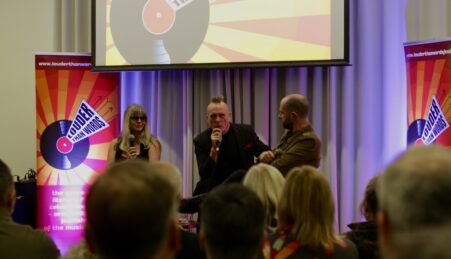Philomena’s story was originally retold by Martin Sixsmith, a former BBC foreign correspondent, in his book The Lost Child of Philomena Lee (2009). In the film, Sixsmith is played by Steve Coogan, who also wrote the screenplay for the film with Jeff Pope.
The movie follows Philomena as she approaches Sixsmith in 2004, in order to tell her story and enlist his help in tracing her son, who was sold off into adoption by the nuns as a toddler. Through the medium of flashbacks, the audience sees into Philomena’s memories of falling in love as a youth and becoming pregnant. We share her pain as her child is snatched from her and she is forced into working for the nuns. We share her hope as we accompany her tracking down her long-lost son.
This emotional rollercoaster is alleviated by the comic element which is perhaps inevitable in a script written by Steve Coogan. While the material isn’t the sort to have audiences rolling around in the aisles, it does bring some much needed light relief. It also adds cheer to a grim portrayal of the depths to which humanity can sink in the name of religion.
Philomena, played beautifully by Dench, is presented as a complex character. She is deeply religious, traditional and yet completely aware and accepting of the modern social attitudes around her. She is utterly forgiving of everyone else’s sins, while struggling to forgive herself. Some of the best dialogue in the film is between Coogan and Dench as their opposing views about religion and sin create a mutual bond of respect for each other. Both characters are in search of truth, and that is what gives this film a truly human touch.
Philomena’s faith remains unshaken by the trauma that she was put through by the Catholic Church, and the film raises some very important questions about accountability and forgiveness. While Sixsmith becomes enraged at the injustice perpetuated by the Church, Philomena seeks release through forgiveness.
The Catholic Church’s actions in the adoption scandals are utterly condemned in the film. However, the real-life Sisters of the Sacred Hearts of Jesus and Mary have objected to their portrayal as villains. According to the assistant congregational leader, Sister Julie Rose, the order was denied a copy of the script prior to filming, and scenes in it are ‘misleading’. The sisters denied allegations made in the film that records were purposefully destroyed, that the nuns received payment for adoptions, and that information was withheld ‘without lawful reason’.
They are particularly unhappy with the representation of Sister Hildegarde McNulty, a nun especially vitriolic in her condemnation of Philomena’s ‘carnal desires’ in the film. Sister Hildegarde died in 1995, which means that the film’s climactic scene of confrontation never took place in reality, but was added for dramatic effect. It emerges that, in fact, Sister Hildegarde was instrumental in reuniting many mothers with their lost children.

So why has Coogan chosen to grossly misrepresent the true events? The film producers defended the film, saying, ‘it is not a documentary. It is not a diatribe against the Catholic Church, but challenges the Church’s instinct to conceal the original wrong and refuse to apologise’. With the film already raking in £1.51 million in the UK in its opening weekend, it is fair to question Coogan’s objectives in representing the truth. Perhaps his intention was to capitalise upon audience appetites for scandal, particularly where it involves the moral failings of the Catholic Church.
That being said, countless women did suffer similar tragedies throughout the latter century at the hands of the Church. Thousands of women are still in search of their lost children. While the film may not be historically accurate, it puts a human face to an inhumane situation. By doing so, it articulates the pain felt by those who never had the opportunity to have their voices heard.
It’ll make you think.
Lisa Burns studies History and English at MMU. When she’s not got her nose in a book, she loves having adventures in the great outdoors! Follow her on Twitter: @LittleRobin09









Leave a reply